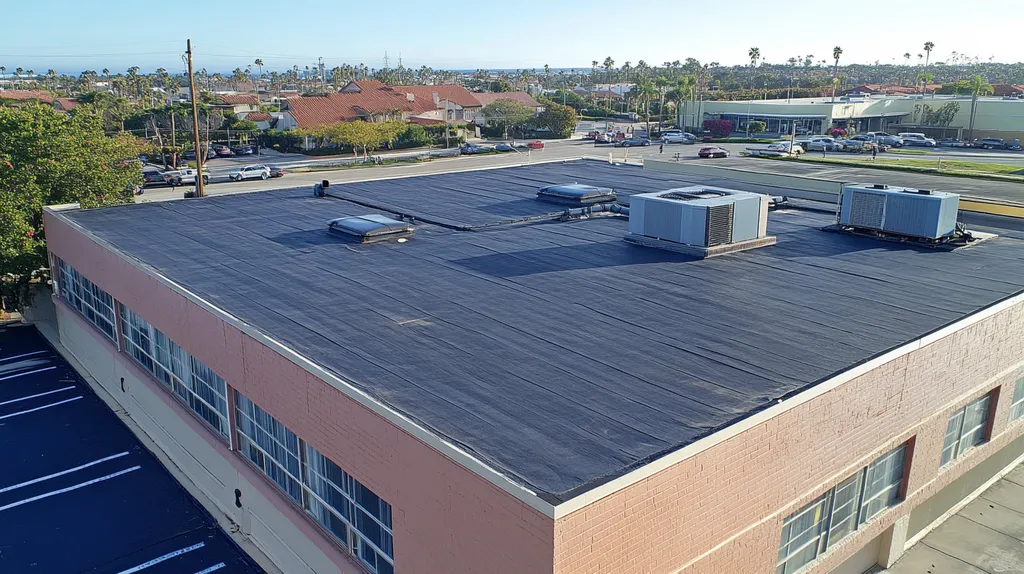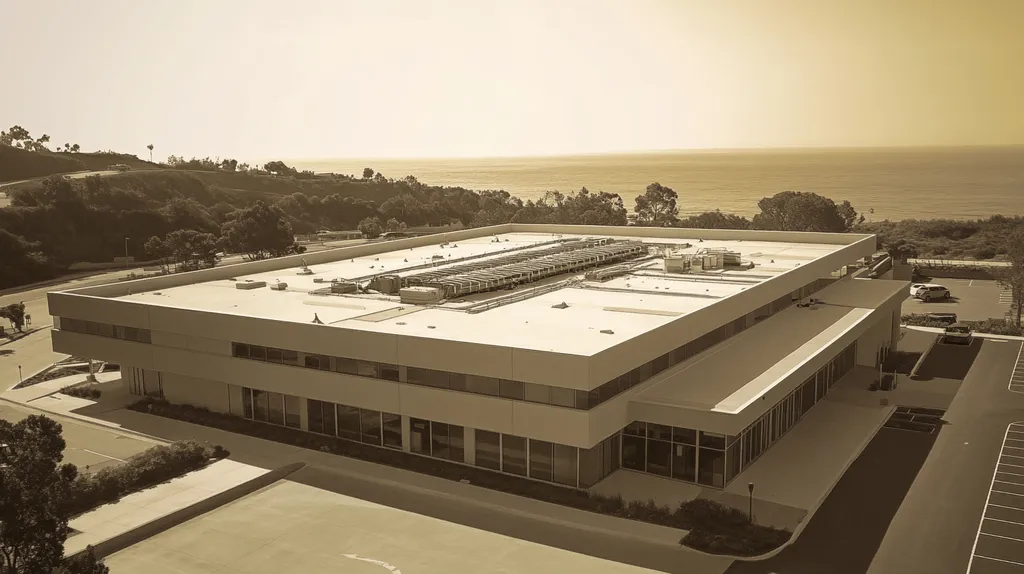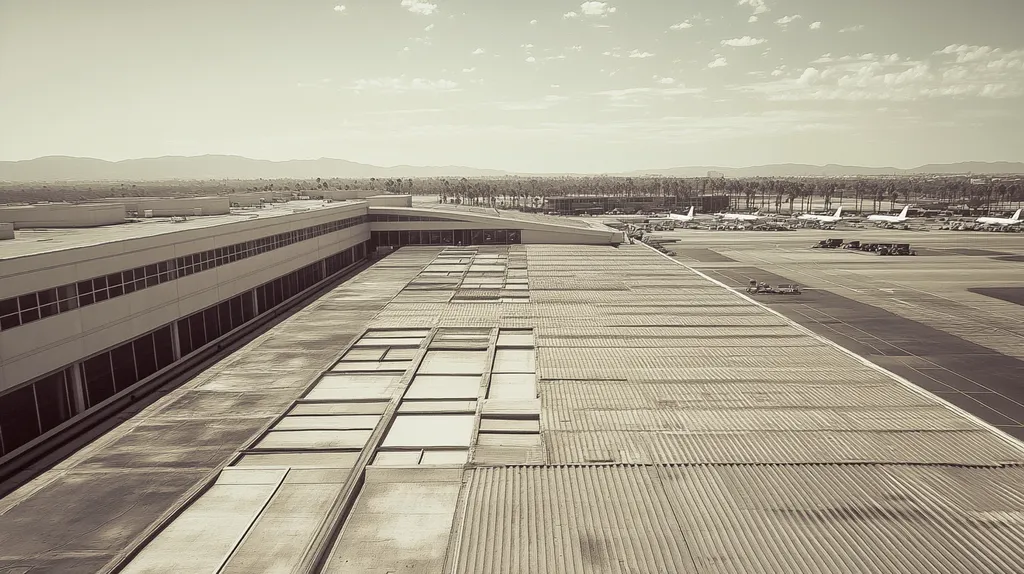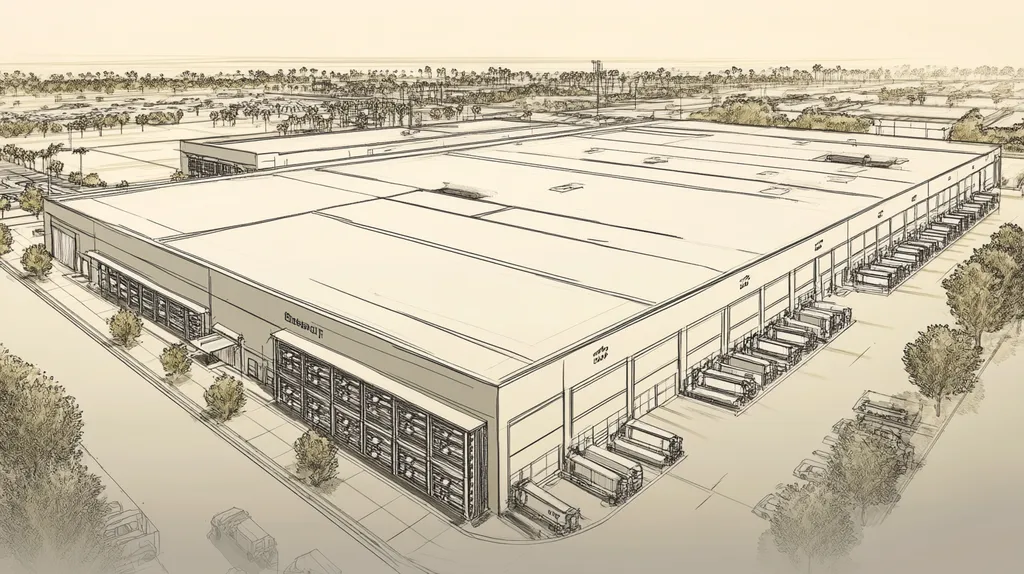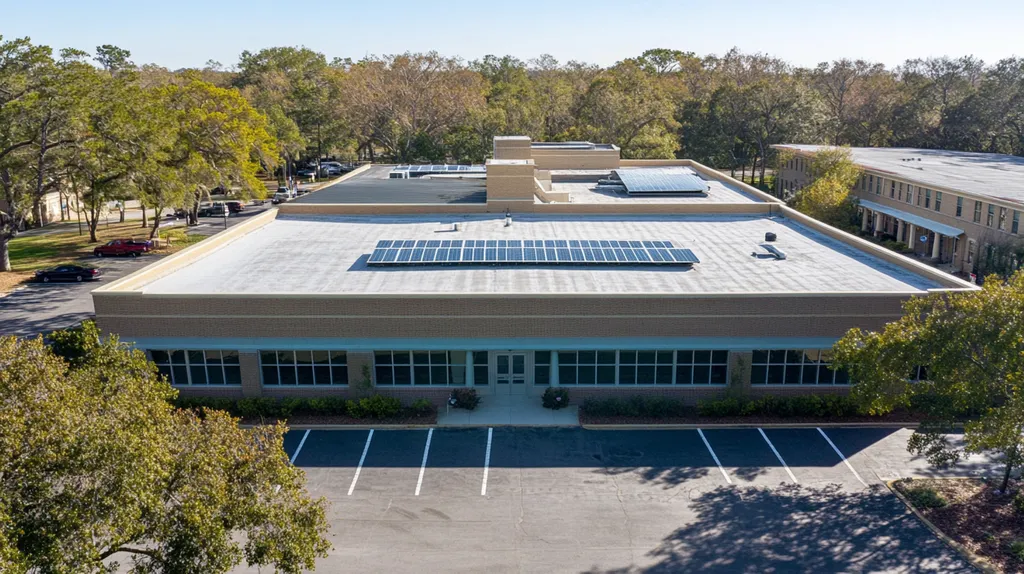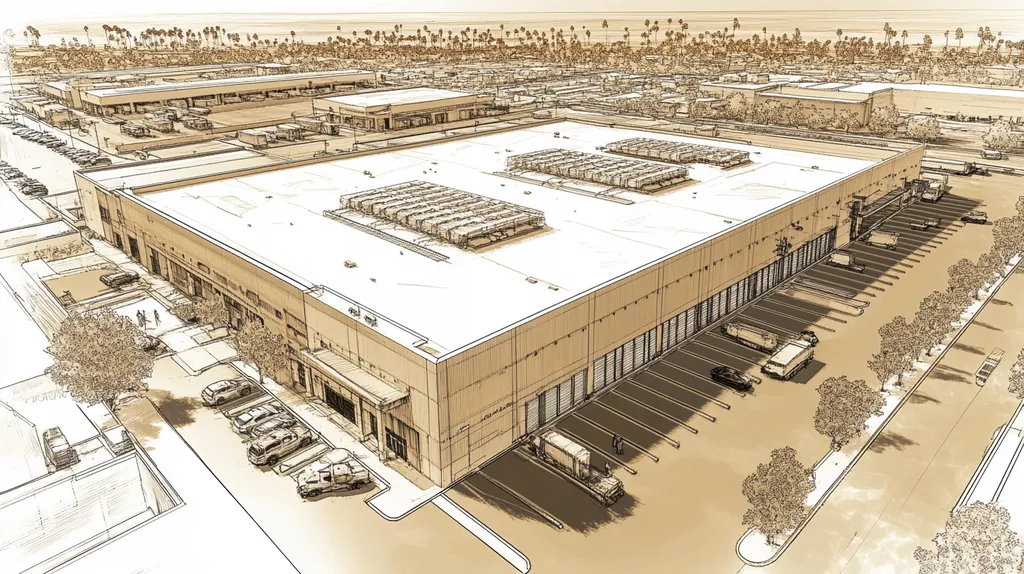The urban landscape is rapidly transforming, with over 60% of commercial buildings now facing critical sustainability challenges. As energy costs soar and environmental regulations tighten, traditional roofing solutions no longer meet the demands of modern facility management.
Green roofs have emerged as a vital solution, offering up to 50% reduction in energy costs while extending roof lifespans by decades. Yet many property owners struggle with implementation, risking costly mistakes and missed opportunities.
This comprehensive guide provides facility managers and property owners with actionable steps for successful green roof integration, from performance metrics to long-term maintenance strategies.
SECTION 1: PERFORMANCE FACTORS
As urban areas continue to expand, the environmental impact of commercial buildings faces increasing scrutiny. Green roofs not only beautify structures but also offer key benefits in energy efficiency and resource management. With buildings contributing nearly 40% of carbon emissions in the U.S., the need for sustainable solutions like green roofs has never been more pressing. For property owners striving for sustainability and financial savvy, grasping the performance factors associated with green roofs is essential.
Energy Efficiency and Insulation
Green roofs significantly boost a building’s energy efficiency. By acting as natural insulation, they decrease demands for heating during winter and cooling in summer. Research indicates that buildings equipped with green roofs can enjoy energy savings ranging from 25% to 50% compared to their traditional counterparts.
This layer of vegetation not only retains heat in colder months but also reflects sunlight when temperatures rise. This dynamic helps maintain a stable indoor climate, leading to reduced energy consumption. As utility costs rise, this translates into notable savings for property owners.
Additionally, lower energy demands contribute to decreased greenhouse gas emissions. By opting for energy-efficient roofing options, businesses not only cut operational costs but also support broader sustainability initiatives.
Key Action Items
Temperature Regulation and Cooling
Green roofs are adept at regulating temperatures, especially in urban heat islands—areas that heat up due to human activity and infrastructure. These roofs can cool ambient temperatures by as much as 30% compared to traditional options.
This temperature reduction not only enhances indoor comfort but also reduces the load on HVAC systems. As air conditioning demands lessen, businesses benefit from lower energy costs and increased employee comfort.
Moreover, green roofs benefit local surroundings, as plants absorb sunlight and release moisture, fostering a balanced microclimate. This cooling effect improves community health by alleviating urban heat. Investing in temperature regulation through green roofs thus enhances building performance while positively impacting the urban environment.
Key Action Items
Storm Water Management
Green roofs excel at managing storm water, particularly vital for commercial properties in flood-prone regions. They serve as natural sponges, absorbing and slowing rainwater runoff. During heavy storms, green roofs can cut runoff by up to 70%, easing the load on drainage systems.
This capability not only lowers flooding risks but also helps filter pollutants, enhancing water quality before it reaches local waterways. With municipalities tightening stormwater regulations, effective runoff management becomes essential for property owners.
Furthermore, successful stormwater management can lead to reduced insurance premiums and ensure compliance with local laws, making green roofs a financially appealing choice. By addressing stormwater challenges proactively, businesses also strengthen their community relationships.
Key Action Items
SECTION 2: FINANCIAL CONSIDERATIONS
As cities work diligently towards sustainability goals, the pressure mounts for property owners to evaluate the benefits of green roofs. These innovative solutions can lead to notable reductions in energy costs, boost property values, and promise long-term savings. Understanding the financial implications of these eco-friendly roofing systems is vital for decision-makers planning for the future.
Reduced Energy Costs
Implementing a green roof can create significant savings in energy bills. A properly installed green roof provides natural insulation, lessening the need for heating and cooling systems. This is especially advantageous in urban environments where heat retention can drive energy usage higher.
Research indicates that buildings outfitted with green roofs can realize energy savings between 25% to 50% annually, thanks largely to the thermal mass generated by the vegetation and soil. A study highlighted that a six-inch extensive green roof can reduce summer energy demands by more than 75% (source: Bachly).
Moreover, the cooling effect of the vegetation helps lower the urban heat island effect, translating into lower cooling costs. For property managers, these immediate savings can significantly affect their overall financial health, allowing for smarter allocation of resources.
Key Action Items
Increased Property Value
Green roofs elevate not only energy efficiency but also the overall value of a property. Buildings featuring green roofs are increasingly in demand, which can translate into higher rental rates and resale values. This growing preference positions these properties favorably in competitive markets.
In fact, real estate studies reveal that properties with green roofs can appreciate at rates exceeding those of traditional roofing systems. The eco-friendly features often resonate with potential buyers, making these properties more desirable.
Additionally, green roofs enhance aesthetic appeal and can provide unique outdoor spaces, attracting tenants and buyers who prioritize sustainable practices. Ultimately, investing in a green roof can lead to increased returns on property investments.
Key Action Items
Long-Term Cost Savings
While the upfront costs associated with green roofs can be higher, the long-term savings can be dramatic. These roofs often double the lifespan of traditional systems, which reduces the frequency of costly replacements and labor expenses.
Additionally, effective stormwater management from green roofs can mitigate the need for expensive drainage systems and potentially lower stormwater fees imposed by municipalities. This proactive approach to stormwater management further decreases ongoing costs for property owners.
Moreover, many governments offer tax incentives and rebates to support environmentally friendly projects, which can help ease initial financial burdens. Over the lifespan of the building, these savings could accumulate to a significant sum, ultimately making green roofs a smart investment choice.
Key Action Items
SECTION 3: COMPLIANCE REQUIREMENTS
As the popularity of green roofs grows among commercial property owners and facility managers, understanding compliance requirements becomes crucial. Noncompliance with green building standards and regulations can lead to hefty fines, project delays, and increased liabilities. In cities such as New York and San Francisco, green roofs are not just recommended; they are mandated for certain developments, highlighting the urgency of adhering to sustainable construction practices.
Green Building Standards
To ensure the benefits of green roofs are fully realized, they must align with established green building standards like LEED (Leadership in Energy and Environmental Design). Achieving LEED certification can significantly boost property values while attracting tenants who prioritize sustainability.
These standards cover essential elements such as energy efficiency, water management, and material selection. Complying with these criteria not only uplifts a building’s sustainability profile but may also qualify it for valuable tax incentives or rebates.
It’s critical for property owners to understand the specific requirements within their chosen certification framework. Each standard has its own guidelines for the installation and maintenance of green roofs. Consulting with knowledgeable professionals ensures compliance and facilitates the certification process.
Key Action Items
Local and Federal Regulations
Adhering to local and federal regulations is a cornerstone of any green roof initiative. Many cities enforce specific zoning laws that mandate a minimum percentage of permeable surfaces or green spaces within developments.
Federal regulations, like those outlined in the Clean Water Act, also affect the design and operational requirements of green roofs. Compliance with these stormwater management regulations is essential to mitigate flooding and reduce urban pollution.
Property owners should take the time to familiarize themselves with their locality’s environmental regulations and building codes. Ignoring these can lead to significant fines and construction disruptions. Engaging with local authorities early in the planning process can ensure alignment with regulatory updates and promote community support for green projects.
Key Action Items
Certification and Documentation
Accurate documentation is critical for achieving green roof certification. This includes keeping detailed records of all materials, installation methods, and routine maintenance procedures.
Thorough documentation ensures transparency and accountability, which are vital for meeting regulatory standards. Additionally, it helps track the performance of the green roof, making sure it adheres to environmental benchmarks.
Several organizations provide valuable resources to assist with this documentation process, simplifying the task for property owners. Effectively maintaining documentation not only aids compliance but also reflects a commitment to sustainable practices, an increasingly important factor for potential tenants and investors in commercial real estate.
Key Action Items
SECTION 4: RISK MANAGEMENT
As climate change intensifies, commercial roofing structures face unprecedented challenges. With the Urban Heat Island (UHI) effect and stormwater runoff becoming critical issues, green roofs emerge as a powerful solution. According to the Environmental Protection Agency, UHI can increase energy consumption by up to 15%. For property owners and facility managers, understanding and managing these risks is essential for achieving sustainability and efficiency.
Mitigating Urban Heat Island Effect
The Urban Heat Island effect significantly drives up energy costs while contributing to environmental harm. Conventional roofs tend to absorb heat, which elevates surrounding temperatures and heightens cooling needs. Green roofs counteract this trend by providing insulation and lowering heat absorption through vegetation, which cools the air via evapotranspiration.
Implementing green roofs can lower ambient temperatures by 4 to 7 degrees Fahrenheit. This reduction not only decreases cooling costs but also aids in fostering a sustainable urban ecosystem. Cities with widespread green roof adoption report lower energy use compared to those relying on traditional options, making it imperative for property owners to consider green roofing as an effective strategy for reducing their ecological and economic footprint.
Moreover, neglecting the UHI effect can lead to increased strain on the electrical grid during peak summer months, raising the likelihood of outages. In today’s urban landscape, green roofs are not merely an option—they are a necessity.
Key Action Items
Managing Runoff and Flooding
Stormwater runoff is a significant concern for urban infrastructure, leading to flooding and water quality complications. Traditional roofs contribute to this hazard by funneling rainwater directly into drainage systems, which can easily become overwhelmed. In contrast, green roofs can absorb rainwater and release it slowly, significantly alleviating this issue.
Research shows that green roofs can retain up to 75% of rainfall, particularly during heavy storms, thus reducing the burden on drainage systems and preventing basement flooding in adjacent buildings. Effective runoff management not only helps avoid costly repairs but also mitigates legal liabilities arising from water damage.
Additionally, green roofs enhance water quality by filtering pollutants and sediment, preventing harmful runoff from entering local waterways. This environmental benefit can strengthen a property’s sustainability profile and potentially lead to tax incentives or reduced insurance costs for property owners.
Key Action Items
Extending Roof Lifespan
Investing in a green roof can considerably extend the lifespan of a commercial roofing system, making it a wise long-term financial strategy. Conventional roofs face deterioration from UV rays, severe thermal fluctuations, and precipitation, leading to premature aging. On the other hand, green roofs add a protective layer that shields roofing materials from these damaging elements.
Studies indicate that green roofs can double the lifespan of traditional roofing systems, extending from an average of 20 years to over 40 years. This longevity not only reduces the frequency of costly replacements but also lowers overall lifecycle expenditures for property owners.
Moreover, the insulation offered by green roofs stabilizes indoor temperatures, further decreasing the strain on HVAC systems. By minimizing temperature fluctuations that traditional roofs endure, property owners can benefit from long-term performance and fewer maintenance needs. The investment in a green roof is not just about aesthetics or sustainability; it’s a strategic method to protect asset value and manage financial risks over time.
Key Action Items
SECTION 5: OPERATIONAL PROCEDURES
Implementing a green roof goes beyond installation; it demands a well-structured set of operational procedures to secure its longevity and effectiveness. A lack of robust planning can lead to serious complications, including water pooling, plant failure, or undue structural stress. Research shows that green roofs can lower temperatures by as much as 10°F, but achieving these benefits hinges on proper installation and ongoing maintenance. This section details essential steps for installation and maintenance, developing a comprehensive O&M plan, and prioritizing regular inspections to enhance the advantages of green roofing systems.
Installation and Maintenance
The foundational performance of a green roof is rooted in its installation. This process encompasses critical elements such as drainage, waterproofing, and selecting the right soil and vegetation. Inadequate management can result in root penetration through membranes, causing leaks and costly damage.
Maintenance routines must include regular watering—especially during dry periods—and proactive weed removal to prevent unwanted plant competition. Neglecting these tasks can jeopardize plant health and diminish the roof’s insulation capabilities and lifespan.
Moreover, ongoing education for maintenance teams is vital to understand the specific care needs of chosen vegetation, including seasonal adjustments and nutrient requirements for optimal growth. By selecting native plants suitable for the local climate, property owners can create a self-sustaining ecosystem that minimizes both resource use and maintenance efforts.
Key Action Items
O&M Plan Development
Establishing a detailed Operations and Maintenance (O&M) plan is essential for green roof success. This plan should list all necessary maintenance tasks, their frequency, and the responsibilities of various team members or contractors involved in upkeep.
A well-crafted O&M plan not only curtails expenses by identifying potential issues before they worsen, but it also aligns with industry standards, ensuring that the green roof enhances the building’s energy efficiency and aesthetic appeal.
Regular training sessions should be integral to the O&M plan, equipping maintenance staff with the latest methodologies and best practices. Additionally, documenting maintenance activities will provide valuable insights for tracking plant health over time and managing resources effectively.
Key Action Items
Regular Inspection and Repair
During inspections, property managers should assess drainage efficiency, soil conditions, and overall plant health. Early detection of issues can prevent extensive repairs later, making such inspections a fundamental aspect of ongoing care.
When repairs are needed, they must be addressed promptly. Leaks or compromised components should be managed immediately, as water retention issues can increase weight load and create risks of structural failure. Collaborating with certified professionals who specialize in green roofs ensures that repairs follow best practices, safeguarding the roof as a valuable asset while fostering environmental stewardship.
Key Action Items
SECTION 5: OPERATIONAL PROCEDURES
Implementing a green roof is not merely about installation but demands comprehensive operational procedures to safeguard its longevity and effectiveness. Without a detailed plan, property owners may encounter critical challenges such as water pooling, plant failure, or excessive structural stress. Research suggests that green roofs can lower ambient temperatures by as much as 10°F, but these benefits hinge on proper installation and ongoing maintenance. This section delves into essential steps for installation and maintenance, developing a robust O&M plan, and highlighting the necessity of regular inspections to maximize the advantages of green roofing systems.
Installation and Maintenance
The proper installation of a green roof is vital for its success and overall performance. This process requires careful attention to drainage, waterproofing, and the selection of appropriate soil and plant species. Mismanagement can lead to serious issues, such as root penetration through membranes, resulting in leaks and costly damage.
Maintenance is another critical aspect, encompassing regular watering—especially during dry spells—and proactive weed removal to prevent competition for resources. Failure to manage these tasks can lead to compromised plant health, directly impacting the roof’s insulation and longevity.
Moreover, maintenance teams must receive ongoing training to understand the specific needs of the plants selected, including seasonal care adjustments and nutrient requirements. Choosing native vegetation can create a self-sustaining ecosystem that minimizes resource use and maintenance efforts.
Key Action Items
O&M Plan Development
Establishing a comprehensive Operations and Maintenance (O&M) plan is crucial for the successful upkeep of a green roof. This plan should clearly outline all necessary maintenance activities, their frequency, and the specific roles of team members or contractors responsible for upkeep.
A well-structured O&M plan not only helps prevent costly issues before they arise but also ensures compliance with industry standards, contributing to the roof’s energy efficiency and visual appeal.
Regular training sessions will be an integral part of the O&M plan, keeping maintenance personnel informed of the latest best practices. Additionally, documenting maintenance activities helps track plant health trends and resource use, providing valuable insights for future decision-making and resource allocation.
Key Action Items
Regular Inspection and Repair
Routine inspections are essential for maintaining the health and longevity of green roofs. These regular assessments allow property owners to identify early signs of damage or plant stress, helping to prevent larger problems down the line. Areas that are overlooked may lead to moisture retention, which can compromise both the roof structure and overall building integrity.
During inspections, property managers should assess drainage efficiency, soil conditions, and the health of the plants. Identifying issues early can save significant expenses in repairs, making inspections a vital part of the ongoing maintenance strategy.
When repairs are necessary, they should be addressed without delay, especially regarding leaks or compromised components. Water retention can increase the weight load on the roof, risking structural integrity. Collaborating with certified professionals ensures that repairs adhere to the best practices, safeguarding the roof as a valuable asset while maximizing environmental benefits.
Key Action Items
Looking Ahead
By 2030, over 70% of commercial buildings will require significant sustainability upgrades to meet tightening environmental regulations and rising energy costs.
Green roofs represent a proven solution, with studies showing ROI exceeding 200% over 40 years through reduced energy consumption, extended roof lifespans, and increased property values.
The transformation from traditional to green roofing systems mirrors the evolution from coal to renewable energy – an inevitable shift driven by economic and environmental imperatives.
For commercial property owners, the choice is clear: implement comprehensive green roof solutions now or face mounting costs and compliance challenges in the coming decades.
The future of commercial roofing has arrived, and it’s decidedly green.
FREQUENTLY ASKED QUESTIONS
Q. What are the performance benefits of a commercial roof?
A. Green roofs significantly enhance energy efficiency by acting as natural insulation, reducing heating and cooling demands. They can lower energy usage by as much as 50%, leading to substantial cost savings. Additionally, they contribute to regulating indoor temperatures and managing stormwater runoff effectively.
Q. How can a green roof affect my industrial roof’s financial value?
A. Implementing a green roof can significantly enhance property values by promoting energy efficiency and attracting environmentally conscious tenants. Properties with green roofs often appreciate faster in competitive markets. Additionally, the aesthetic appeal and reduction in utility costs make these buildings more desirable to potential buyers.
Q. What compliance requirements exist for green roofs in commercial buildings?
A. Compliance with green building standards like LEED is crucial for achieving the benefits of a green roof. These standards help ensure sustainable practices are followed, influencing energy efficiency, water management, and materials used. Failing to meet these requirements can result in fines and delayed projects.
Q. How do green roofs help manage stormwater on commercial properties?
A. Green roofs can absorb rainwater, significantly reducing the amount of runoff that reaches drainage systems. This capability minimizes the risk of flooding and helps filter pollutants from rainwater. By retaining and gradually releasing stormwater, green roofs promote better water quality and aid in regulatory compliance.
Q. What are the risks associated with neglecting a green roof’s operation?
A. Neglecting green roof maintenance can lead to problems such as water pooling, plant failure, and structural stress. Regular inspections and maintenance are essential to ensure the roof performs effectively and retains its advantages. If issues arise, they can escalate into costly repairs and reduce the roof’s lifespan.
Q. How do I ensure proper installation of my commercial roof?
A. Proper installation requires attention to critical elements such as drainage, waterproofing, and selecting suitable vegetation. Engaging with professionals who specialize in green roofs can facilitate adherence to best practices. Documenting the installation process enhances compliance and ensures the roof performs as intended.
Q. What ongoing care is needed for green roofs in commercial settings?
A. Ongoing care involves regular watering, weed removal, and monitoring plant health. It’s crucial to document maintenance activities and keep a detailed Operations and Maintenance (O&M) plan. Seasonal adjustments in care must be made to address plant needs and ensure the roof continues to provide its ecological benefits.

